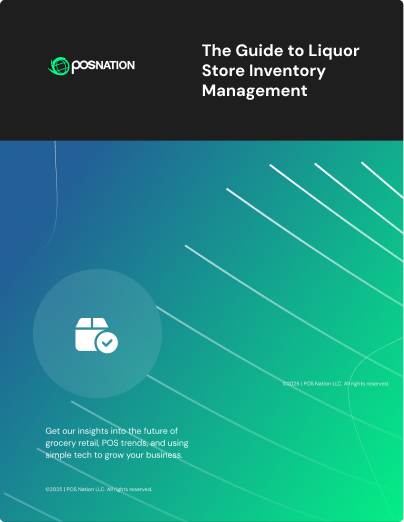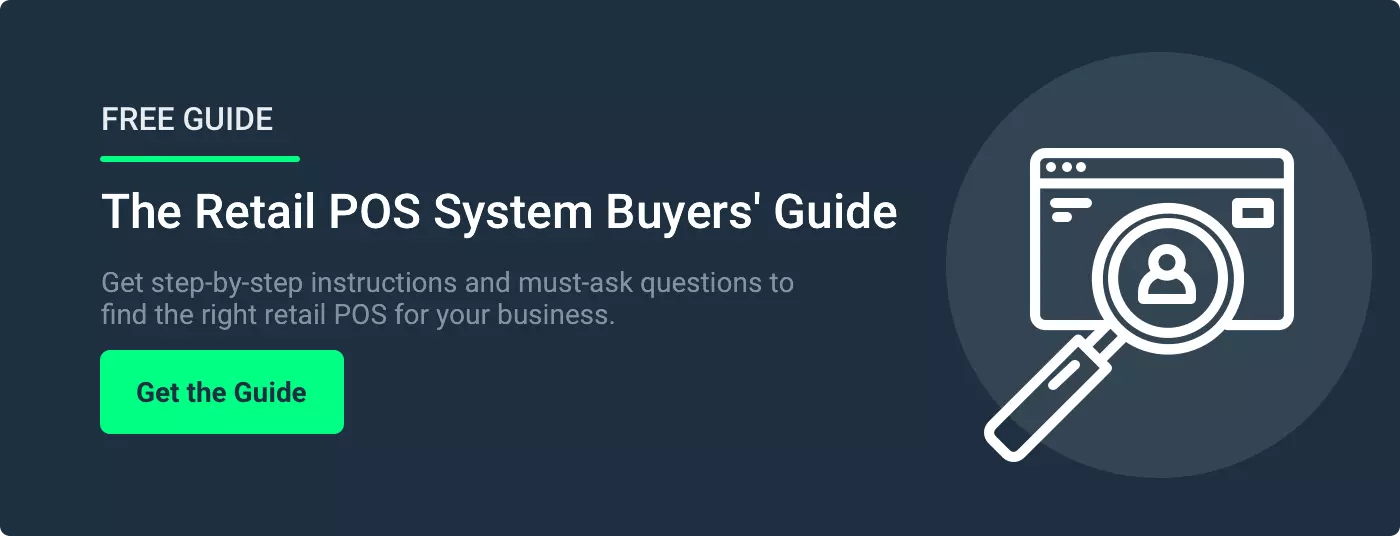Understanding and improving your store's performance is crucial for operating a successful retail store. A well-designed retail store performance dashboard provides insights into your business' health and helps you make better decisions.
From tracking sales metrics to evaluating customer satisfaction and operational efficiency, the right set of key performance indicators (KPIs) can highlight strengths, identify areas for improvement, and guide strategic initiatives.
In this blog, we'll explore six essential KPIs that every retail store should monitor closely. We’ll also provide practical strategies for effectively tracking and leveraging them through a store performance dashboard.
Choosing the Right KPIs for Retail Stores
Key performance indicators (KPIs) are quantifiable indicators of progress toward a goal, and tracking the right KPIs will help you improve retail operations. Common KPIs include sales metrics, inventory management, operational efficiency, and more (we’ll dig in below).
Why track KPIs? It’s simple: Without knowing your numbers, how will you know where and how to improve?
Without tracking key metrics, you may not know where you’re overspending, losing money, making money, or if your marketing efforts are performing as anticipated.
One way to see everything in one place is to use a retail store performance dashboard. Once customized, it will show important daily, monthly, and annual metrics you can use to make better business decisions. You can also use your performance dashboard to pull reports any time you need them.
With this baseline info in mind, let’s now explore the benefits of using a retail store performance dashboard for your business.
Benefits Of Using A Retail Store Performance Dashboard
There are more pros than cons of using a store performance dashboard. The biggest con is implementation, and that’s simply because you may not know where to start. Lucky for you, we’re here to help!
When you use a store performance dashboard, you can expect:
- Improved decision-making: Access real-time data to enhance decision-making for store operations and marketing. For example, the dashboard can show you exactly which items are selling fast and which take longer to leave the shelves. This will help when it comes to reorders.
- Improved efficiency and profitability: Monitor sales, traffic, and conversion rates to identify areas for improvement. You can also track inventory levels and supply chain metrics to ensure optimal stock levels. When you get your inventory metrics right, you’ll reduce your risk of the dreaded stockout without swinging too far the other way into overstocking.
- Happier customers: Analyze customer behavior and feedback to provide a better shopping experience and build brand loyalty. When you understand your customers’ trends and needs, you can better serve them, and offer them more value.
Now that you understand the benefits, let’s talk about your performance dashboard KPIs.
6 Retail Store KPIs To Track
There are several KPIs any given business could track on a regular basis, but the ones you choose should be specific to your retail business. Below, we list six common KPIs to use as a starting point.
1. Sales per Customer
This metric provides insight into customer spending habits by analyzing the average transaction size. This data reveals whether your customers come to spend big or work on a budget. Knowing this information will help you increase sales with promotions, rewards, or sales.
An advanced point of sale (POS) system helps with the segmentation of sales per customer data. Use it to target distinct customer groups with tailored rewards and promotions, effectively encouraging additional purchases and increasing overall sales.
Your POS can also give you insight into seasonal sales performance for better demand forecasting.
2. Inventory Management
Knowing what’s in your inventory is crucial for business success. Your dashboard should include metrics for inventory turnover rate, sell-through rate, and stock-to-sales ratio.
All of this information will prevent overstock, stockouts, and deadstock, and a proper POS will include inventory management features that make this a cinch.
3. Customer Experience
Knowing how your customers feel about your business will only help you get better… leading to even more customers! Your dashboard should track your Net Promoter Score (NPS), customer retention rate, and customer satisfaction rate.
Survey customers and ask if they would recommend your store. Add surveys to your receipts to allow for easy distribution and ensure your data connects with actual customers. In retail, good scores are as follows:
- 63% or higher for customer retention
- 61 or higher for NPS
- 75% or higher for customer satisfaction
Related Read: How To Deal With Difficult Customers: 8 Productive Tips
4. Operational Efficiency
How well-oiled is your machine? Is there room for improvement? Tracking employee productivity will provide metrics such as sales per employee, customer engagement, and product knowledge.
You can also set up a widget to measure shrinkage rate, enabling you to track losses due to theft, damage, or admin errors.
5. Financial Health
Gross margin is the percentage of revenue that exceeds the cost of goods sold (COGS), while profit margin is a measure of how much money a company makes per sale. Both are used to determine how efficient you are at turning a profit.
Your profit margin provides a clear picture of your retail business’ financial health, how well it's run, and its growth potential. Another financial health indicator, your gross profit margin will show how profitable your business is after subtracting COGS.
Related Read: Gross Profit Margin vs. Net Profit Margin: Which Is More Important?
6. Marketing Effectiveness
Are you seeing a return on your marketing investment? Are all those social media ads worth it? Tracking your marketing effectiveness will help you home in on the right message for the right audience. If you see that an email or ad isn’t resonating, try tweaking the subject line and the product description, or adding a promotion.
Tracking these six key metrics on your dashboard can help you take your store’s performance and efficiency to the next level! But without the right tool, tracking all these things separately can be a headache. Let’s explore how to find the right tool for your dashboard.
Setting Up a Retail Store Performance Dashboard
First and foremost, your dashboard performance tool should be easy to use and understand. It should be customizable and provide you with the information you need without paying for costly extras.
As you research the right solution, look for robust, customizable reports, 24/7 customer support, and integrations with other tools you use.
Choosing the Right Tools
Your point of sale system is a data goldmine — are you harnessing its power? With features such as inventory management, sales history, employee management, and more, you have what you need to monitor revenue, conversion rates, average transaction size, inventory turnover, customer retention, and more.
If you can’t see this information with your current POS or you’re using traditional cash registers, it’s time for an upgrade.
Modern POS systems like POS Nation come with built-in reporting features. They feature a wide range of built-in reports and dashboards that provide real-time visibility into performance, from sales and inventory levels to customer loyalty.
Tracking and Analyzing KPIs in Retail Stores
Now that you have a better understanding of the KPIs to track on your store performance dashboard, it’s time to talk about monitoring those results.
Once you start gathering data, wait two to three months to analyze the results and look for trends. From here, you can set benchmarks and goals you hope to achieve six months to one year from now. A good way to set goals is by using the SMART methodology: your goals should be Specific, Measurable, Achievable, Relevant, and Time-bound.
An example of a SMART goal could be:
- Increase our monthly sales revenue by 10% within the next three months by launching a customer loyalty program and running special promotions.
Monitor your KPIs regularly and adjust your strategies based on the insights they provide. You’ll quickly identify trends and areas for improvement.
Upgrade Your Retail Performance Dashboard With POS Nation
Tracking KPIs is essential to running a successful retail business. Rather than using spreadsheets, leverage tools that will help you understand customer and sales trends and empower you to make data-driven business decisions.
POS Nation is an all-in-one point of sale solution that can help manage everything from inventory management to sales history, loss prevention, barcode printing, and more. It also comes with an assortment of pre-built reports ready for immediate use.
With everything in one place, your store performance dashboard will always provide real-time information at the click of a button.
Schedule a demo today to see how POS Nation can help your retail store thrive.







 by Brian Sullivan
by Brian Sullivan

 by Graham Hoffman
by Graham Hoffman


 by Cort Ouzts
by Cort Ouzts